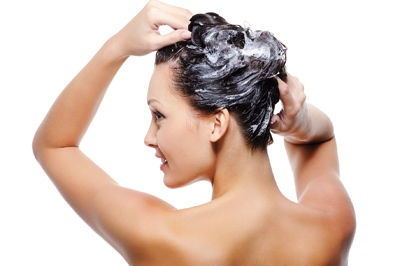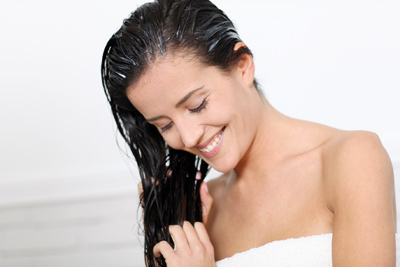Admit it, the first thing you notice when you look at yourself in the mirror every morning is your hair. A good hair day can instantly lift your mood, just as dry and damaged hair can diffuse your self-esteem. Regular care of your tresses can increase your chances of waking up to great looking hair more often. Here’s what you can do to restore damaged hair back to health.
Let’s first understand our hair
To know your hair type, simply run your fingers through your tresses. If your fingers glide through them easily, detangling them, and they feel soft to touch, then you are lucky to have healthy hair. Frizz, split ends, tangles and rough-looking hair qualifies as dry and damaged hair. A shiny, bouncy and bright look indicates good healthy hair.
Let us understand the hair structure better. Our hair is made up of three layers—cuticle, medulla and cortex—out of which, cuticle is the most important layer. It has a structure resembling tiles overlapping on a roof and is very vulnerable to damage. Cuticle, responsible for the appearance of our hair, is made up of protein covered by a layer of lipids. Damage to this protein causes weakened hair; while the lipid layer, when ripped off, causes split ends and makes the hair look dull and frizzy. The intercellular cement between the different layers is most vulnerable to damage during procedures like hair straightening, colouring, rough handling and shampooing. The cortex or the innermost layer is damaged during procedures involving heat such as straightening.
Regular care of your tresses can increase your chances of waking up to great looking hair more often
What causes hair damage?
It is mostly faulty hair grooming practices that cause dry and damaged hair. Repeated rough washing, unprotected drying, exposure to harsh sunlight and alkaline chemical treatments cause hair damage. Hair that has undergone chemical procedures, requires special care with emphasis on correct styling products and methods. Exposure to sunlight and other forms of direct heat like dryers and iron rods can weaken the hair fibres significantly. Faulty combing practices can also contribute to hair breakage and hair damage.
Dos and don’ts for healthy tresses
Let us follow the sequential order of shampooing, conditioning, combing and styling to understand what the right ways of going about these hair-care practices are.
The correct way to shampoo
- Apply shampoo on the scalp from the front working your way to the back. Avoid rubbing it on the hair body.
 Prefer a mild, pH balanced shampoo with added conditioner for best results.
Prefer a mild, pH balanced shampoo with added conditioner for best results.- Use your fingertips to spread the shampoo evenly rather than scrubbing it on the top of your head.
- Rinse the shampoo thoroughly with cold or lukewarm water [avoid hot water] as build-up of the residual products can make your hair look limp and dull.
- Avoid professional shampoos [available at salons] as they are harsher on hair.
- Avoid baby shampoos for chemically treated hair.
- Shampoo your hair not more than twice or thrice a week. Over washing the hair rips off the outer protective layer of natural oils.
Moisturise, Moisturise, Moisturise!
 A good conditioner is a must for dry hair to make it stronger and improve its appearance. The conditioner reduces the static charge by replenishing the lipid layer. It seals the gaps between the cuticle layers, thus strengthening the hair fibre. It improves the ability to comb while minimising breakage. Conditioning is also a must before detangling or combing curly or severely damaged hair.
A good conditioner is a must for dry hair to make it stronger and improve its appearance. The conditioner reduces the static charge by replenishing the lipid layer. It seals the gaps between the cuticle layers, thus strengthening the hair fibre. It improves the ability to comb while minimising breakage. Conditioning is also a must before detangling or combing curly or severely damaged hair.- Conditioners that contain protein hydrolysate, especially keratin hydrolysate, are very effective for treated hair.
- Anti-dandruff or medicated shampoos should always be followed by hair conditioners.
- Deep conditioning can be added to your weekly hair-care regime. Use a hair mask or leave-on serum or massage with warm coconut oil followed by shampooing to see the best results.
 Drying your hair
Drying your hair
- Gentle towel drying to remove excess water and air drying the hair is advisable. Avoid wringing the hair with a towel since this is lethal for hair health.
Pre-wash oiling is a must
- Coconut oil or any other mineral oil should be applied on the tips of your hair before a hair wash. Coconut oil is the most preferred oil as it prevents protein loss from the hair. It can be used for both pre as well as post wash hair grooming.
The right hair styling habits
- Blow drying can damage the hair and make it look lifeless. Blow drying at a distance of 15 – 20 cm, along with usage of heat-protector agents like silicone can minimise hair damage due to heat. Still, it should be used as infrequently as possible.
- Avoid flat or curling irons.
- Chemical hair straighteners should be completely avoided as well.
- Hair straightening should only be done at the junction of previously straightened hair and new growth.
- It is best to wait for a minimum of 15 days after hair straightening before you colour your hair.
- Always use semi permanent dyes that are ammonia-free.
- Hair masks should definitely be a part of grooming chemically treated or straightened hair to prevent hair breakage.
- Avoid shampoos and other hair products containing sulphates and alcohol.
Comb with love and care
- If you have to comb wet hair, do so with a wide toothed in order to minimise split ends and dull hair.
- Prefer combs to hair brushes since tangling of hair is more common with the latter. Hair brushes tend to increase the frizz making your hair look dull.
- Tight hair styles like braiding or tight buns increase hair loss. Use of hair accessories should be kept to a minimum.
Protecting from sun damage
- Avoid direct exposure to sunlight.
- Wear a wide brimmed hat or a hair length scarf.
- Wear a cap while swimming.
- Usage of hard water does not lead to weakened hair but can lead to loss of sheen. A good hair serum or conditioner is helpful.
Healthy diet for a healthy mane
- Include lot of protein rich foods like pulses, lean meat and nuts in your diet.
- Omega-3 rich foods like avocados, walnut, flaxseeds and cold water fish are excellent hair foods.
- Iron and zinc supplements are helpful in some cases.
A good hair day is just a few steps away. Dry and damaged hair is easy to take care of, provided one follows the right steps to proper hair care. Last but not the least, staying happy and stress-free go a long way in maintaining hair health. Have a happy hair day always!
 Spot an error in this article? A typo maybe? Or an incorrect source? Let us know!
Spot an error in this article? A typo maybe? Or an incorrect source? Let us know!
